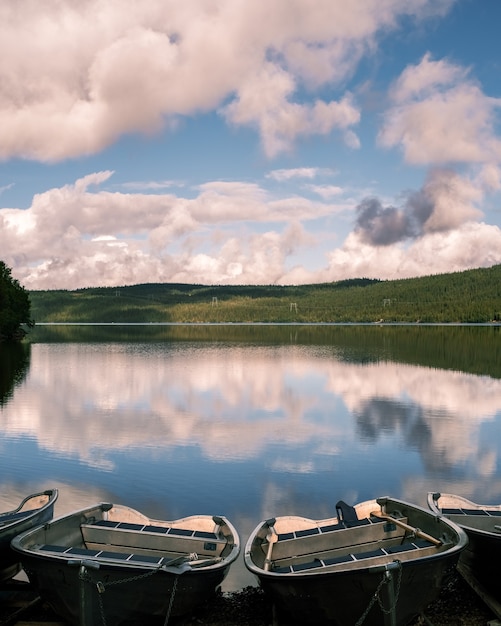Fascinating Facts about Lakes

Lakes are bodies of water that are surrounded by land.
The world’s largest lake, by surface area, is the Caspian Sea.
Lakes can be formed by a variety of natural processes, including tectonic activity and glacial erosion.
Lake Baikal in Russia is the deepest lake in the world, reaching depths of over 1,600 meters.
Many lakes provide habitats for a diverse range of plant and animal species.
Some lakes, such as the Great Salt Lake in Utah, contain high levels of salt, making them unsuitable for many forms of life.
Lakes can also be valuable sources of drinking water for surrounding communities.
Some lakes, known as crater lakes, are formed in volcanic craters.
The color of a lake’s water can vary depending on the presence of minerals and other substances.
The Great Lakes in North America are a group of five interconnected freshwater lakes that are renowned for their size and beauty.
Lakes can vary greatly in size, from small ponds to massive bodies of water spanning hundreds of square kilometers.
Some species of fish, such as trout and bass, are commonly found in lakes and are popular targets for fishing enthusiasts.
Lakes can serve as important recreational areas for activities such as boating, swimming, and water sports.
Some lakes, such as Lake Titicaca in South America, are considered sacred by local indigenous cultures.
Many lakes offer stunning views and are popular tourist destinations.
Fascinating Facts about Lakes part 2
The lakeside environment often supports lush vegetation and provides habitats for various bird species.
Lakes can undergo eutrophication, a process in which excessive nutrients cause algal blooms and deplete oxygen levels in the water, harming aquatic life.
Some lakes freeze over during winter, allowing for ice skating and other winter activities.
Lake Michigan is the only Great Lake that is entirely within the borders of the United States.
Lakes play a vital role in regulating the global climate by storing and releasing large amounts of heat energy.
The largest lake in Africa, Lake Victoria, is shared by three countries: Kenya, Uganda, and Tanzania.
A lake’s shoreline can be home to unique ecosystems, providing habitat for a diverse range of plants and animals.
Some lakes, such as Lake Nyos in Cameroon, have experienced deadly releases of carbon dioxide due to volcanic activity.
Many lakes are formed in glacially carved valleys, with their basins becoming filled with meltwater as the glaciers recede.
Lakes can be used for hydroelectric power generation by constructing dams and utilizing the water’s potential energy to drive turbines.
The Great Lakes are important shipping channels, connecting the upper Midwest with the Atlantic Ocean via the St. Lawrence Seaway.
Lakes are often favored spots for sunset watching, as the tranquil waters reflect the colorful hues of the setting sun.
Lake Victoria is not only the largest lake in Africa but also the second-largest freshwater lake in the world, after Lake Superior.
Many lakes offer recreational fishing opportunities, attracting both locals and tourists in search of a catch.
Lakeshores are often popular spots for picnics and family gatherings, offering a sense of tranquility and natural beauty.
Sea levels have risen in recent years, causing some lakes to experience higher water levels and subsequent habitat changes.
Lakes can support diverse food chains, with microscopic plankton serving as the foundation for larger organisms.
Some lakes, such as the Dead Sea, have such high salt content that swimmers can effortlessly float on the water’s surface.
Norway is known for its picturesque fjords, which are large lakes surrounded by towering cliffs and waterfalls.
Lakes can be sources of inspiration for artists and writers, who often use their beauty as subjects for their works.
Many lakes, such as Lake Tahoe in California and Nevada, offer stunning opportunities for nature photography.
The largest lake in the world, by volume, is the Caspian Sea, which is technically classified as a lake due to its lack of a direct connection to the oceans.
Lakes can have a crucial role in flood control by acting as reservoirs, absorbing water during heavy rainfall or snowmelt.
Some lakes, such as the Great Bear Lake in Canada, remain frozen for most of the year due to extreme cold temperatures.
Lakes can exhibit thermocline layers, with distinct temperature gradients at different depths, impacting the distribution of aquatic life.
Many lakes have become popular wedding destinations, offering romantic settings and panoramic views for couples on their special day.
The world’s highest navigable lake is Lake Titicaca, located in the Andes Mountains on the border of Bolivia and Peru.
Lakes can experience seasonal variations in water level, with some drying up almost completely during periods of drought.
Some lakes, such as Lake Tanganyika in Africa, are known for their high species diversity, with numerous unique fish species found nowhere else on Earth.
Lakes can have cultural and historical significance, often tied to local folklore and legends that have been passed down for generations.

